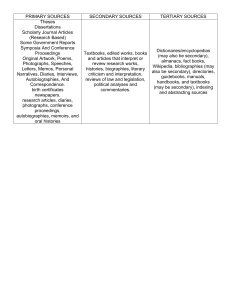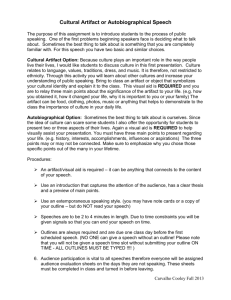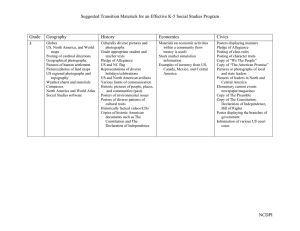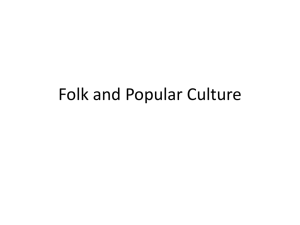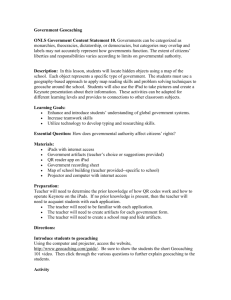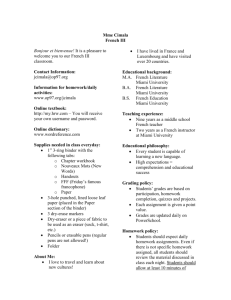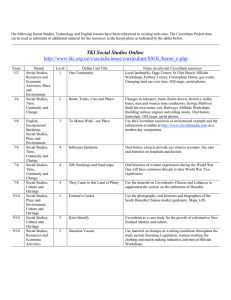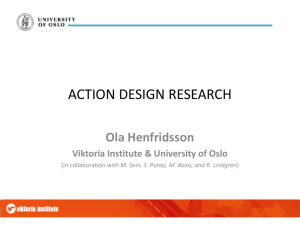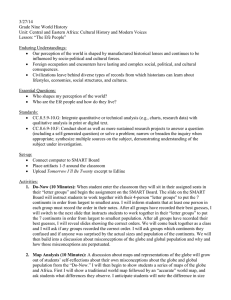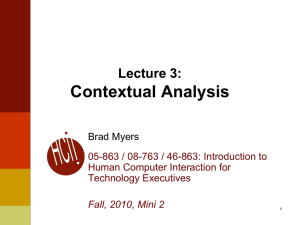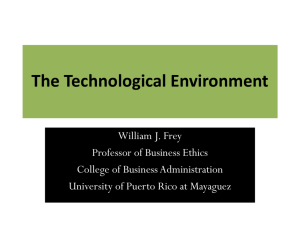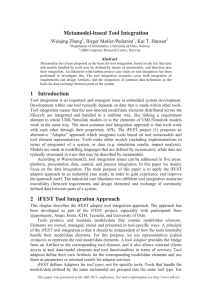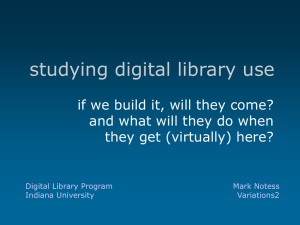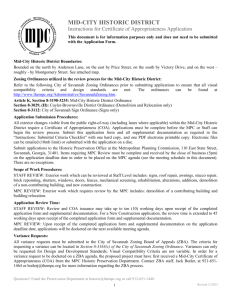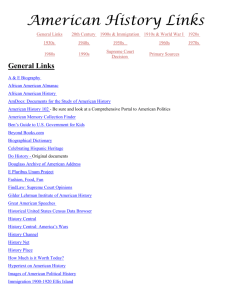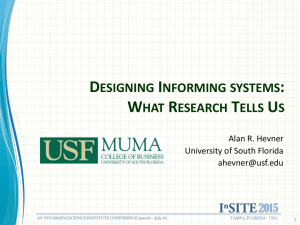Guidelines for Using Primary Sources in your Classroom
advertisement
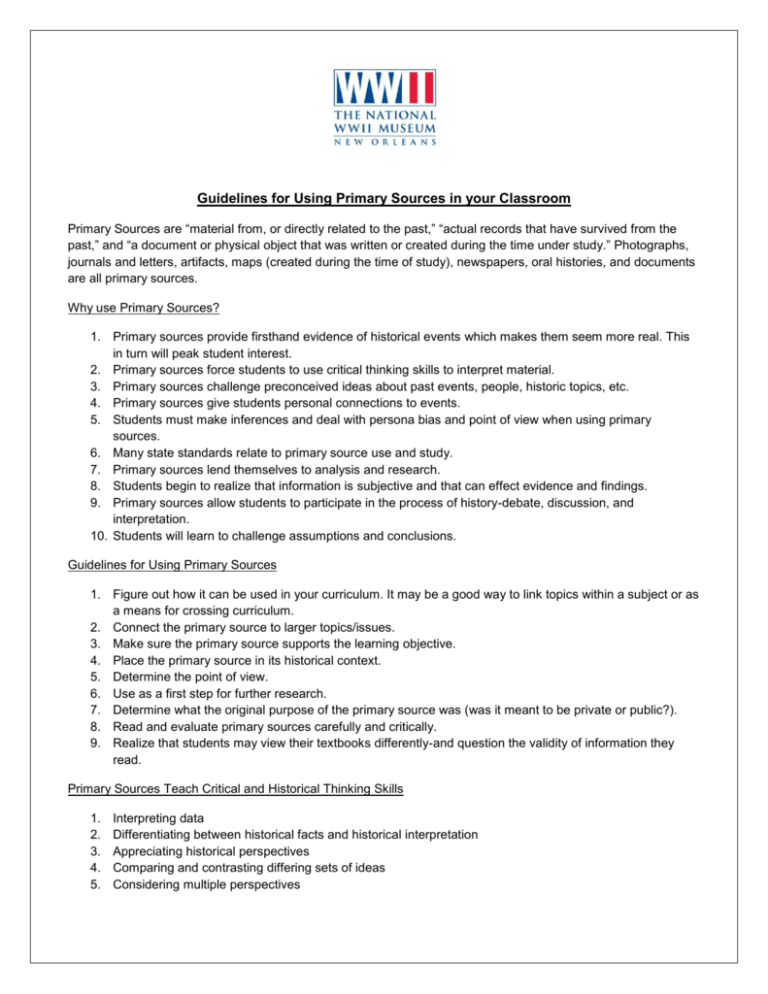
Guidelines for Using Primary Sources in your Classroom Primary Sources are “material from, or directly related to the past,” “actual records that have survived from the past,” and “a document or physical object that was written or created during the time under study.” Photographs, journals and letters, artifacts, maps (created during the time of study), newspapers, oral histories, and documents are all primary sources. Why use Primary Sources? 1. Primary sources provide firsthand evidence of historical events which makes them seem more real. This in turn will peak student interest. 2. Primary sources force students to use critical thinking skills to interpret material. 3. Primary sources challenge preconceived ideas about past events, people, historic topics, etc. 4. Primary sources give students personal connections to events. 5. Students must make inferences and deal with persona bias and point of view when using primary sources. 6. Many state standards relate to primary source use and study. 7. Primary sources lend themselves to analysis and research. 8. Students begin to realize that information is subjective and that can effect evidence and findings. 9. Primary sources allow students to participate in the process of history-debate, discussion, and interpretation. 10. Students will learn to challenge assumptions and conclusions. Guidelines for Using Primary Sources 1. Figure out how it can be used in your curriculum. It may be a good way to link topics within a subject or as a means for crossing curriculum. 2. Connect the primary source to larger topics/issues. 3. Make sure the primary source supports the learning objective. 4. Place the primary source in its historical context. 5. Determine the point of view. 6. Use as a first step for further research. 7. Determine what the original purpose of the primary source was (was it meant to be private or public?). 8. Read and evaluate primary sources carefully and critically. 9. Realize that students may view their textbooks differently-and question the validity of information they read. Primary Sources Teach Critical and Historical Thinking Skills 1. 2. 3. 4. 5. Interpreting data Differentiating between historical facts and historical interpretation Appreciating historical perspectives Comparing and contrasting differing sets of ideas Considering multiple perspectives 6. Distinguishing between unsupported expressions of opinion and informed hypotheses grounded in historical evidence 7. Comparing competing historical narratives 8. Formulating historical questions 9. Interrogating historical data 10. Supporting interpretations with historical evidence 11. Identifying issues and problems in the past 12. Identifying relevant historical antecedents 13. Supporting interpretations with historical evidence Uses for Primary Sources in the Classroom 1. Topic for debate-historical documents, photographs, and speeches are all good starting points for historical debate topics. 2. Jumping off point for further research-use the primary source to brainstorm ideas or narrow focus. 3. As a “hook” –some students have little or no interest in history and an interesting artifact, photograph or speech can sometimes spark interest in a topic. 4. To supplement the textbook-no one source can give students everything they need to be well versed in a topic and a variety of primary sources supplement the information found in textbooks and other research materials. 5. Research projects-primary sources add depth to research projects. 6. Mock trial or re-enactment-use court documents or newspaper accounts to help write and research a trial or other important historic event. 7. To show multiple points of view-looking at letters written by soldiers on different sides of a battle, photos taken at different points during an important event, and maps of a geographic area from different eras show students multiple viewpoints of a single event or topic. 8. To illustrate abstract concepts-freedom, democracy, communism, love, etc. are all difficult concepts for students to understand. Using a primary source such as speech, document or artifact can help illustrate their meaning. 9. As material for cross-curricular lessons-art and artifacts, photographs, speeches and oral histories, etc. are useful in linking literature, the arts, and science and technology to social sciences. 10. Standardized Test Practice – using primary sources teaches general critical thinking and test specific skills. Key questions for Primary Sources 1. When was it created? (this impacts the integrity of the source) 2. Who wrote/created it? (This is important for point of view) 3. What was its original purpose? (You will look at the source differently depending on its purpose-to inform, persuade, as an object of beauty or purpose) 4. Who was the intended audience? 5. What kind of source (document, artifact, etc.) is it? 6. What feelings does it invoke? 7. What is the point of view? 8. Is there any visible bias? 9. Does it raise any questions/concerns? 10. How does it fit into the larger topic of study? 11. What is interesting/important/confusing?
